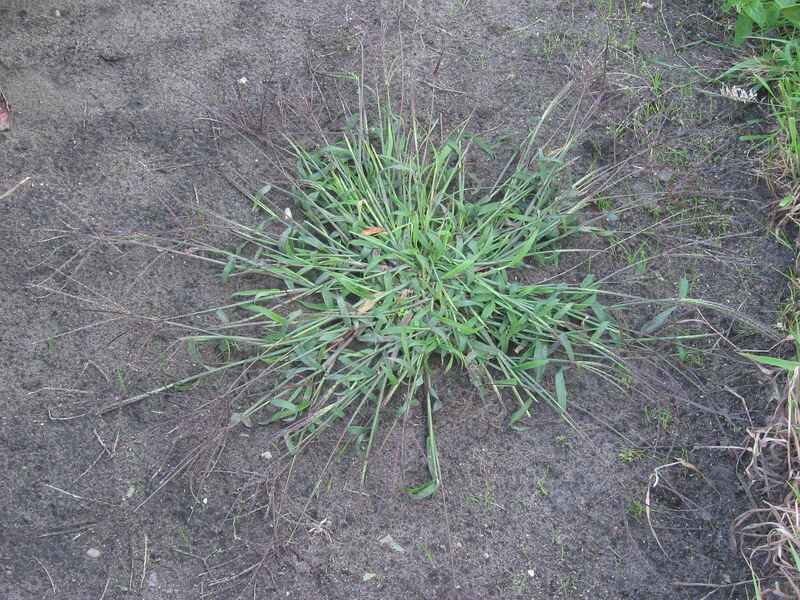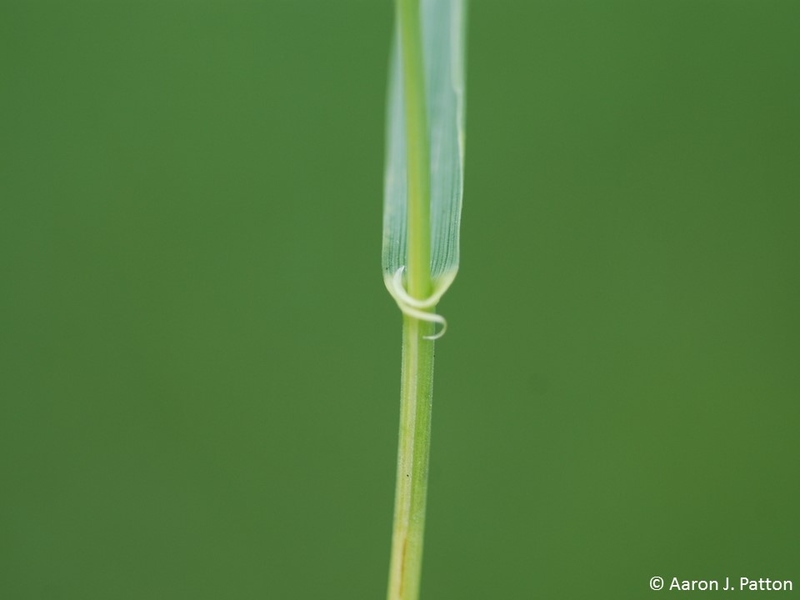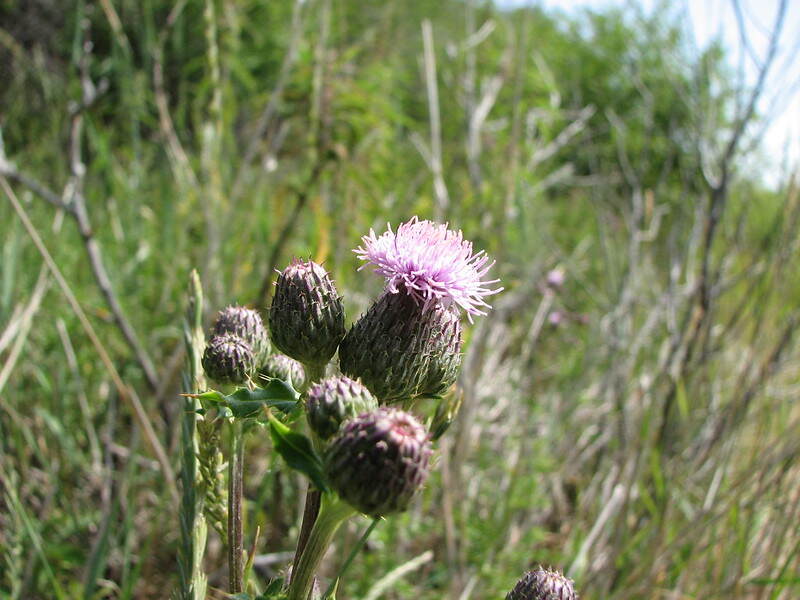
In Idaho, your lawn’s worst enemies come in all shapes and sizes. From crabgrass to dandelions, there’s quite a botanical rogue’s gallery. Learn how to identify nine common weeds in Idaho lawns.
If you feel your lawn has turned into a wild jungle full of weeds but you can’t really know what type of weed you are dealing with, continue reading. Armed with the knowledge you find in this article, you can take the right measures to enjoy a weed-free space again.
Common Grassy Weeds in Idaho
1. Crabgrass

Crabgrass is an aggressive warm-season annual that outcompetes cool-season turfgrasses in hot and dry conditions.
- Appearance: It has leaves broader than average grass blades and it grows in clumps close to the ground, resembling a crab’s legs. It is easy to spot thanks to its light yellow hue, though its older leaves take on a dark red shade.
- Germination: It germinates in the spring and thrives through the summer. As the temperature rises it produces thousands of seeds in a single season. Come the first frost, the plant dies, but don’t celebrate just yet. Its seeds lie dormant through the winter, plotting their return.
Learn more about crabgrass in these articles:
2. Quackgrass

Quackgrass is an aggressive cool-season perennial that enjoys everything from partly shaded nooks to full sun. This grassy weed is a survivor. It can adapt to various environments, though it prefers moist soil and doesn’t fare well in dry regions.
- Appearance: Quackgrass grows unbranched and upright up to 4 feet tall, making it the giraffe of lawn invaders. Its leaves roll in the bud, and a pair of narrow auricles clasp the stem at the base of each leaf blade.
- Germination: It germinates in the spring and sets seed in late summer. Plants remain green all year. Although it can reproduce by seed, many of those seeds are sterile, so the real threat comes from its underground network of rhizomes that spread quickly.
Common Broadleaf Weeds in Idaho
3. White Clover

White clover is the charming yet persistent weed you never invited to your lawn.
- Appearance: This broadleaf weed is easily recognizable by its round white flowers, each stem boasting more than five blossoms and three leaflets with rounded tips.
- Germination: It germinates from April to December and spreads above and below ground, thanks to its aggressive stems and shallow roots. Its versatility in thriving under various conditions makes it a weed wanderer, found all over North America.
Learn control tips in our article: “How to Get Rid of Clover and Not Kill Grass.”
4. Canada Thistle

The Canada thistle is a very aggressive broadleaf weed that doesn’t play nice. This weed produces allelochemicals that stunt the growth of nearby plants, ensuring it’s the star of your yard.
- Appearance: Canada thistle’s leaves are shallow-lobed and toothed with spiny margins. The upper leaf surface is dark green and smooth, while the underside is light green and covered with wooly hairs. It can be as tall as 3 feet.
- Germination: Canada thistle flowers are purplish-pink and bloom from June through August. These flowers bear numerous seeds equipped with “parachutes” that let them hitch a ride on the wind, spreading their reign of terror far and wide. New plants can sprout from these windblown seeds and from its underground roots.
5. Dandelions

Dandelions can become the bane of every turf lover’s existence.
- Appearance: Dandelions are short-lived perennials. They have deep and thick taproots that can reach up to 3 feet long. Their jagged-edged leaves and hollow, leafless stems end in a single yellow flower head. If you cut any part of this plant, it’ll ooze a milky white juice.
- Germination: Dandelions grow just about anywhere. They put on a floral show from March to November, with flowers that quickly morph into fluffy white seed heads. Each of these fluffy heads holds up to 20,000 viable seeds, equipped with a feathery parachute, ready to take to the skies at the slightest gust of wind.
For ways to get rid of it (or reasons you should leave it be), check out these articles:
6. Black Medic

This is an annual broadleaf weed commonly found throughout North America:
- Appearance: Black medic has dark green, clover-shaped leaves. It is a shallow-rooted plant that has many slender, slightly hairy stems that grow flat to the ground, spreading out 1 to 2 feet from the main taproot like an octopus.
- Germination: Black medic has bright yellow flowers clustered on short stems. Each flower cluster is about a half-inch long and consists of up to 50 tiny individual flowers. It germinates from April and continues into October.
7. Field Bindweed

Field bindweed is a perennial vine that forms dense mats.
- Appearance: Its long stems can stretch up to 4 to 6 feet long. It has arrowhead-shaped, dull green leaves. This weed has a deep tap root and shallow, horizontal lateral roots that can dive up to 9 feet deep.
- Germination: From June to September, field bindweed puts on a daily floral show with its white-pink, trumpet-shaped flowers that open each morning and close each afternoon. You can see its seeds at the base of the flower. They are dark gray-brown with irregular bumps.
8. Dalmatian Toadflax

Dalmatian toadflax is a short-lived, perennial herb found in semi-arid areas.
- Appearance: This aggressive weed can grow up to 4 feet tall and spreads faster than gossip in a small town. Its root system can penetrate up to 6 feet deep and extend 12 feet across, making it a relentless invader. Dalmatian toadflax has waxy, bluish-green leaves shaped like eggs with pointy tips.
- Germination: Its flowers are bright yellow with orange or white centers and spurred, growing up to 2 inches long. These blossoms make their appearance from May to August. Its seeds are black to dark brown, ridged, and irregularly angled.
9. Leafy Spurge

Leafy spurge is a toxic perennial weed you can find in your Idaho lawn.
- Appearance: It grows in clusters with upright stems reaching 3 to 4 feet tall. It has deep tap and lateral roots. Don’t let its charming appearance fool you; this weed is no sweetheart. Break a stem, and it releases a toxic, milky sap that can cause blisters on your skin and even permanent blindness if it gets in your eyes.
- Germination: It germinates in spring. It has showy, yellowish-green, heart-shaped bracts that enclose small flower clusters. Each flower can produce an average of 140 seeds.
FAQ About Weeds in Your Idaho Lawn
How can I get rid of weeds in my Idaho lawn?
To tackle weeds in Idaho, try hand-pulling for small infestations. When hand-pulling, remove the entire plant, including roots, and pull when the soil is moist. For larger infestations, use herbicides. Broad-spectrum herbicides are made for various weeds and selective ones for specific types.
For more tips, check out our article: “How to Get Rid of Stubborn Weeds in Your Grass.”
Do herbicides kill grass?
Non-selective herbicides will kill everything they touch: weeds, grass, flowers, and plants. In contrast, selective herbicides are formulated to target specific weeds without harming your grass.
Take a look at the following articles about herbicides:
- Types of Post-Emergent Herbicides
- 8 Best Post-Emergent Herbicides of 2024 [Reviews]
- Applying Post-Emergent Herbicides to Your Lawn
What is a pre-emergent herbicide?
A pre-emergent herbicide is applied to lawns before weeds germinate. Its function is to prevent weed seeds from sprouting and growing, stopping them before they become visible.
Here are some useful articles about pre-emergent herbicides:
- 8 Best Pre-Emergent Herbicides for Lawns [Reviews]
- When and How to Use Pre-Emergent Herbicides to Kill Your Lawn’s Weeds
When to Hire a Professional
Recognizing common Idaho weeds is the first step in defending your lawn from their persistent invasions. However, if the weed warriors have already claimed too much ground, it might be time to ask for help. Contact a lawn care professional to help you with your yard and ensure weeds don’t come back.
Here are more lawn care and landscaping resources for Idaho:
Main Image Credit: zhang yongxin / Adobe Stock Free / License